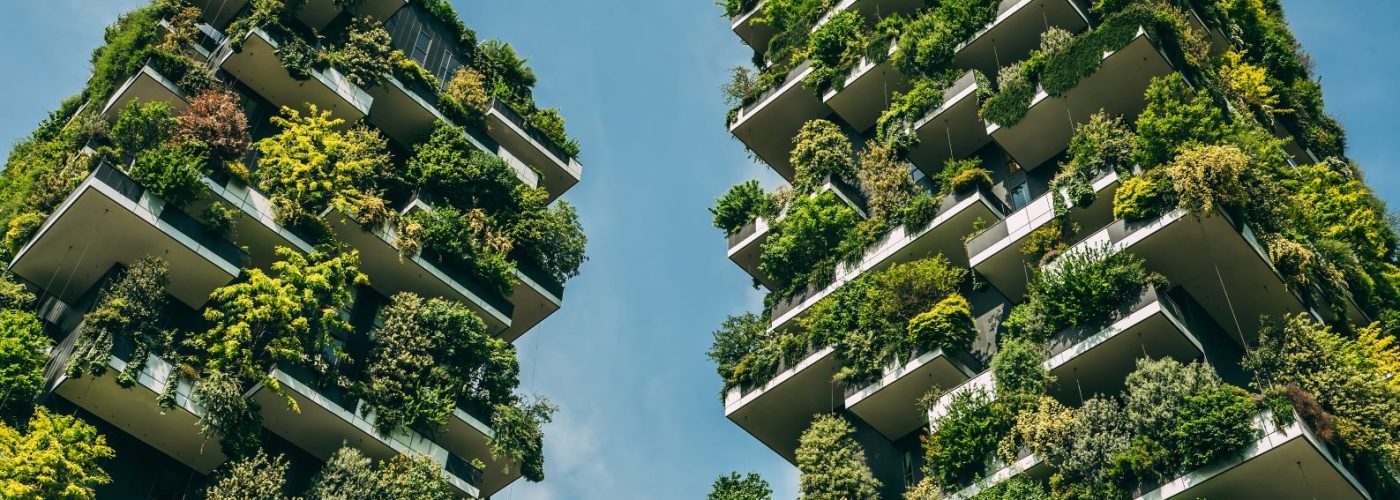Considering the environmental impact of a new building
Inspired by the Italian novel The Baron in the Trees, Bosco Verticale — or Vertical Forrest in English — are two tower blocks situated in Milan, Italy. What makes these structures significant is the abundance of greenery that encapsulates them. To be specific, the towers hold 900 trees, 5,000 shrubs and 11,000 perennial plants. The aim — to eliminate city smog and improve air quality. So, what can the UK’s construction industry learn from these environmental structures? Nick Cowley, managing director at windows and doors manufacturer, Euramax explores.
Towns and cities across the globe constantly require new buildings. The UK alone needs to build 340,000 new homes every year until 2031 if its housing supply is to meet demand. While we cannot fail to fulfil this need for more buildings, it’s equally important that the building and construction industry acknowledges the environmental impact of building more.
Bosco Verticale
Considered the European capital of fashion and football, Milan is also one of the most polluted cities in Europe. In fact, the city was named Europe’s most polluted city in 2008.
The industrial region is surrounded by mountainous terrain that gathers heavy smog. To help reduce the health and environmental impact of Milan’s atmospheric pollutants, Italian architect Stefano Boeri conjured up the concept of Bosco Verticale. Constructed in 2014, the towers are designed to combat air pollution by using the trees and plants to produce more oxygen. It’s predicted that the trees and plants in the towers convert approximately 44,000 pounds of carbon dioxide (CO2) each year.
The greenery also helps to moderate temperatures in the buildings during winter and summer, by shading the interiors from the sun and blocking harsh winds. This use of vegetation is an effective way to reduce the towers’ energy emissions as there is less need for thermostat heating and air conditioning.
Furthermore, the towers’ variety of plant species attracts different birds and insects to the city, improving wildlife conservation. This is important because building and construction often causes irreversible damage to the natural habitats of wildlife and plants.
While Milan is proactively reducing pollution and emissions, what’s happening in the UK?
Natural England
Natural England is the government’s statutory adviser for the natural environment. The group supports the government’s 25 Year Environment Plan, its ambitions for agriculture, fisheries and the natural environment and commitment to becoming a net zero country by 2050. Natural England is dedicated to rebuilding sustainable ecosystems and protecting habitats, species and landscapes to help nature thrive.
The Chair of Natural England, Tony Juniper, has called for the government to change its thinking towards housing and ensure that environmental considerations are incorporated into the design of new housing estates. He believes that politicians and developers must incorporate green thinking into the design of new infrastructure.
According to Juniper, “we need healthy nature to catch carbon, to clean up rivers, to reduce flood risk, to improve public health and wellbeing. All of these have economic upsides, which I fear have been invisible in the development planning process.”
Much like the concept of Bosco Verticale, using vegetation to reduce emissions and pollution is something that Natural England wants the government to recognise.
Green Homes Grant
As well as Natural England’s support, the government announced its Green Homes Grant in July 2020. As part of the scheme, the government will provide vouchers up to £10,000 to make homes more energy efficient. The scheme will run from September 2020 to March 2021 in an attempt to reduce energy emissions and costs. Homeowners and landlords must apply for the vouchers that will fund around 66 per cent of the cost of hiring tradespeople to upgrade the energy performance of their properties.
The renovations that qualify for vouchers are categorised by primary and secondary measures. Primary includes a range of insulation and low carbon heating such as biomass boilers and solar thermal. Secondary measures involve draught proofing, double glazing and replacing and updating thermostats.
For new buildings and those that need updating, it’s important to minimise their environmental impact where possible, and maximise the energy benefits of the buildings. Updating windows and doors is one action that can offer major energy saving benefits. Using double glazed low emissivity glass units, Euramax’s windows and doors have been rated A for their energy efficiency by The British Fenestration Ratings Council (BFRC). The council rates fenestration products from A to G, with A the most energy efficient, helping to cut emissions and costs to run the building. The Energy Savings Trust UK states that a detached home could save up to £160 on energy bills each year with A rated double glazed windows.
While meeting housing demand is vital, so is minimising the environmental impact of construction projects. The UK has already made efforts to improve the sustainability of its buildings with the Green Homes Grant, but it must also demonstrate environmental support from the very start of a construction project. In addition to investing in sustainable materials and energy efficient windows and doors, the UK could take a physical leaf out of Bosco Verticale’s book and rely on natural sources to make construction greener.





